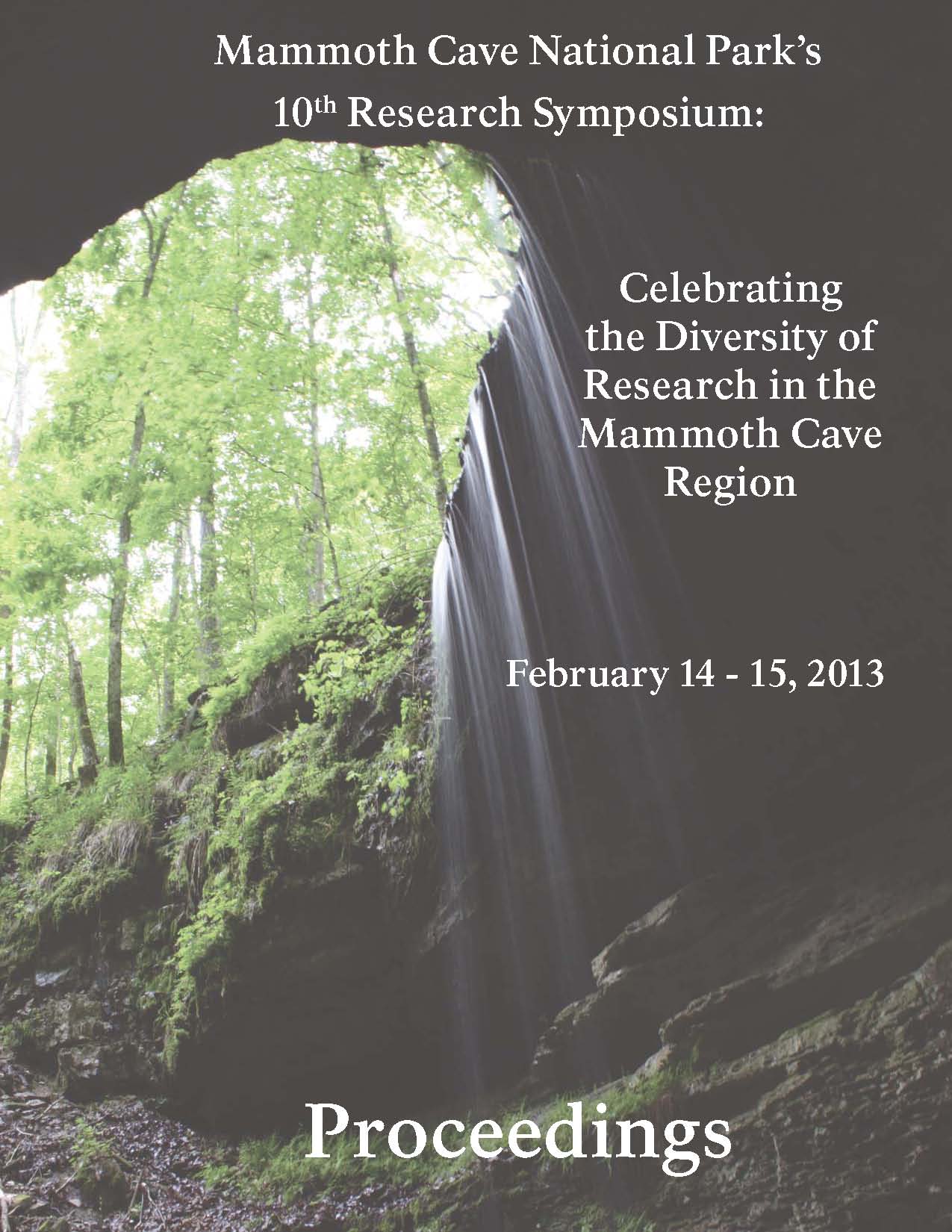Start Date
15-2-2013 2:50 PM
Description
Recently, Mammoth Cave Guide Bruce Hatcher reported what appeared to be contaminated water seeping into Marianne’s Pass. I visited the site and concluded that it was not likely due to pollution, and that it was a natural phenomenon. To be sure, I sampled the water for fecal coliform and E. coli analyses since sewer lines are in the area. The results were <1 mpn/100ml in both cases. A sulfur spring is mentioned at this site in Rambles in the Mammoth Cave, which was published in 1845, and this predates any well drilling that could lead to hydrocarbon and sulfide pollution. Another line of evidence that the seeps are natural is that they are all deeply weathered into the bedrock, which takes a long time. The seeps support thousands of springtails, which feed on the microbial mats, and crickets are common as well. A possible effect on biodiversity will be discussed.
Recommended Citation
Olson, Rick, "Potential Effects of Hydrogen Sulfide and Hydrocarbon Seeps on Mammoth Cave Ecosystems" (2013). Mammoth Cave Research Symposia. 28.
https://digitalcommons.wku.edu/mc_reserch_symp/10th_Research_Symposium_2013/Research_Posters/28
Included in
Animal Sciences Commons, Forest Sciences Commons, Geology Commons, Hydrology Commons, Other Earth Sciences Commons, Plant Sciences Commons
Potential Effects of Hydrogen Sulfide and Hydrocarbon Seeps on Mammoth Cave Ecosystems
Recently, Mammoth Cave Guide Bruce Hatcher reported what appeared to be contaminated water seeping into Marianne’s Pass. I visited the site and concluded that it was not likely due to pollution, and that it was a natural phenomenon. To be sure, I sampled the water for fecal coliform and E. coli analyses since sewer lines are in the area. The results were <1 mpn>/100ml in both cases. A sulfur spring is mentioned at this site in Rambles in the Mammoth Cave, which was published in 1845, and this predates any well drilling that could lead to hydrocarbon and sulfide pollution. Another line of evidence that the seeps are natural is that they are all deeply weathered into the bedrock, which takes a long time. The seeps support thousands of springtails, which feed on the microbial mats, and crickets are common as well. A possible effect on biodiversity will be discussed.

